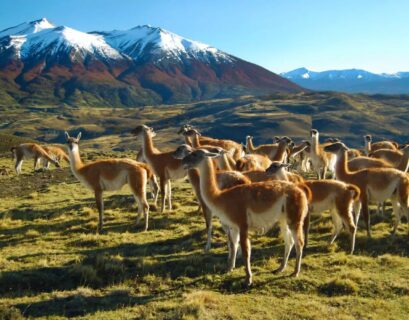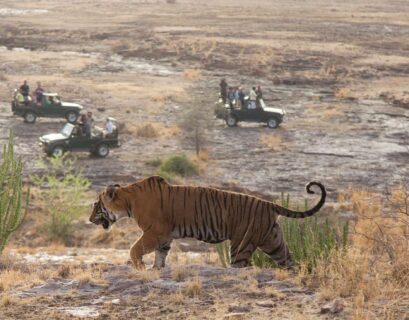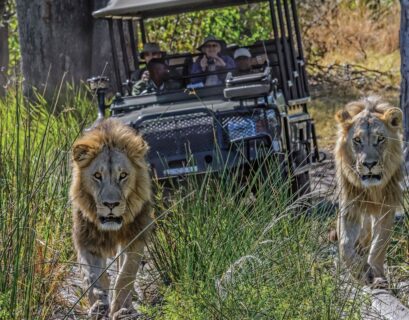Yellowstone National Park, located primarily in Wyoming and extending into Montana and Idaho, is one of America’s most iconic and breathtaking natural wonders. Established in 1872, it holds the distinction of being the world’s first national park. With its diverse ecosystems, geothermal features, and abundant wildlife, Yellowstone offers visitors a unique opportunity to experience nature at its finest. Here’s an introduction to the park and what makes it a must-visit destination.
A Geothermal Wonderland
One of Yellowstone’s most renowned features is its geothermal activity. The park is home to more than 10,000 hydrothermal features, including geysers, hot springs, fumaroles, and mudpots. The most famous of these is Old Faithful, a geyser known for its predictable eruptions that occur approximately every 90 minutes. Watching Old Faithful shoot boiling water high into the air is a must-see event for any visitor.
In addition to Old Faithful, the Grand Prismatic Spring is another geothermal marvel. It is the largest hot spring in the United States and the third largest in the world. Its vivid colors—ranging from deep blue in the center to vibrant oranges and yellows at the edges—are a result of microbial mats that thrive in the mineral-rich waters.
Stunning Landscapes and Ecosystems
Yellowstone’s landscapes are incredibly diverse, ranging from lush forests and alpine meadows to vast canyons and dramatic waterfalls. The Grand Canyon of the Yellowstone is a prime example of the park’s geological beauty. This stunning canyon stretches for about 20 miles and features striking rock formations and two impressive waterfalls—Upper Falls and Lower Falls.
The park’s ecosystems support a wide variety of plant and animal life. From dense forests of lodgepole pines to expansive grasslands, Yellowstone’s habitats are home to species such as bison, elk, grizzly bears, and wolves. The Lamar Valley, often referred to as “America’s Serengeti,” is one of the best places to view wildlife in their natural habitat.
Rich Cultural and Historical Heritage
Beyond its natural wonders, Yellowstone has a rich cultural and historical heritage. Indigenous peoples have lived in the Yellowstone region for thousands of years, and the park is dotted with archaeological sites that reflect their history and connection to the land. Visitors can learn more about this heritage at the various visitor centers and museums within the park.
The historic structures within Yellowstone, such as the Old Faithful Inn and the Roosevelt Arch, offer a glimpse into the park’s early days and the development of America’s national park system. These landmarks are not only architecturally significant but also provide insight into the park’s role in American conservation history.
Outdoor Activities and Adventures
Yellowstone National Park offers a wide range of outdoor activities for visitors of all ages and interests. Hiking is one of the most popular ways to explore the park, with over 900 miles of trails that take you through diverse landscapes and to scenic viewpoints. Some of the most notable trails include the Mount Washburn Trail, the Fairy Falls Trail, and the Yellowstone River Picnic Area Trail.
For those who enjoy water activities, Yellowstone’s lakes and rivers provide ample opportunities for fishing, kayaking, and boating. Yellowstone Lake, the largest high-elevation lake in North America, is a popular destination for boating and fishing, while the park’s rivers offer some of the best fly fishing in the country.
In the winter, Yellowstone transforms into a snowy wonderland, perfect for activities such as cross-country skiing, snowshoeing, and snowmobiling. The park’s winter season offers a different perspective on its landscapes and wildlife, making it a unique time to visit.
Planning Your Visit
When planning a trip to Yellowstone National Park, it’s important to consider the best time to visit. The summer months (June through August) are the most popular, offering warm weather and accessible roads and trails. However, this is also the busiest time, so be prepared for crowds at popular attractions.
Spring (April to May) and fall (September to November) offer cooler temperatures and fewer visitors, making these seasons ideal for those looking to experience the park with a bit more solitude. Wildlife viewing is particularly good during these times, as animals are more active in the cooler weather.
Winter (December to March) provides a unique experience with snow-covered landscapes and opportunities for winter sports. While some areas of the park are closed to vehicles, guided snowmobile and snowcoach tours allow visitors to explore the park’s winter beauty.
Conclusion
Yellowstone National Park is a treasure trove of natural wonders, rich history, and outdoor adventures. Whether you’re drawn by the geothermal features, the stunning landscapes, or the abundant wildlife, Yellowstone offers an unforgettable experience for all who visit. As the world’s first national park, it continues to inspire awe and appreciation for the natural world, making it a must-visit destination for nature lovers and adventurers alike.









